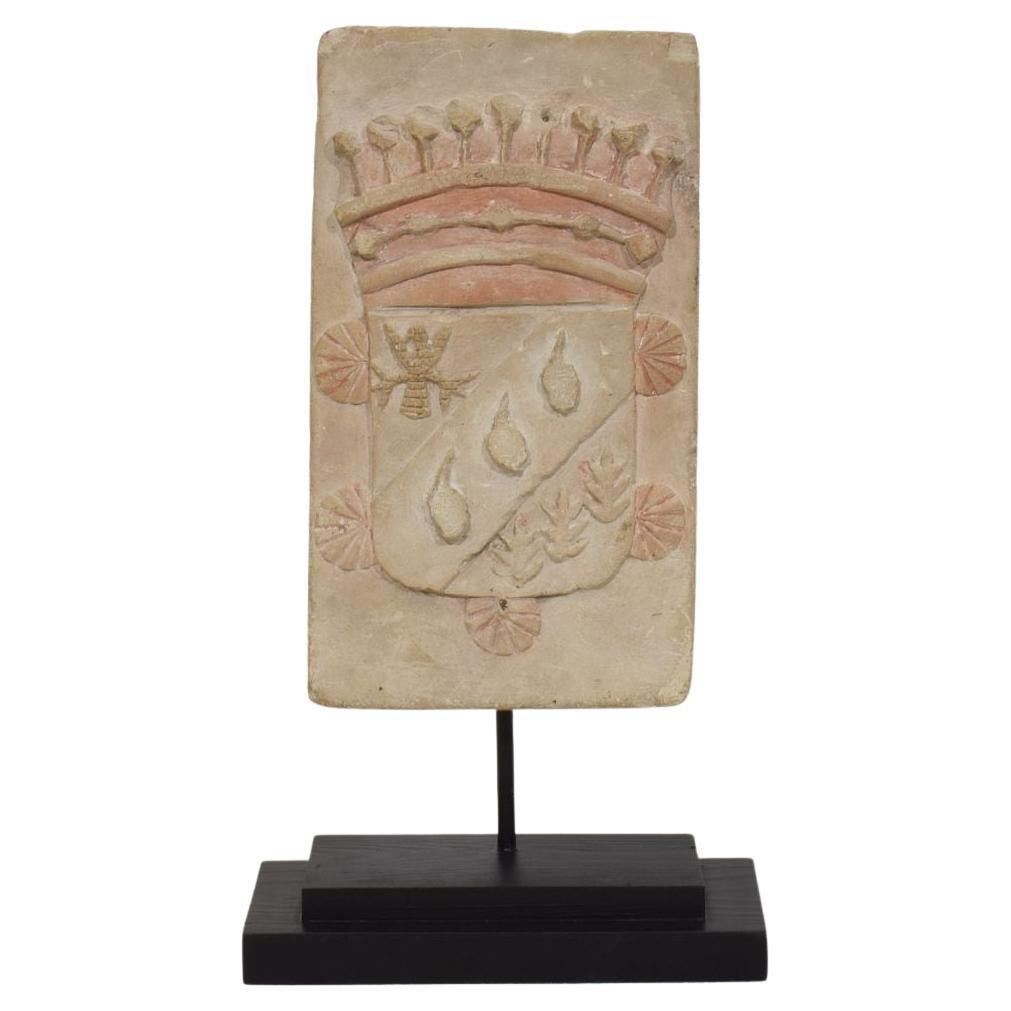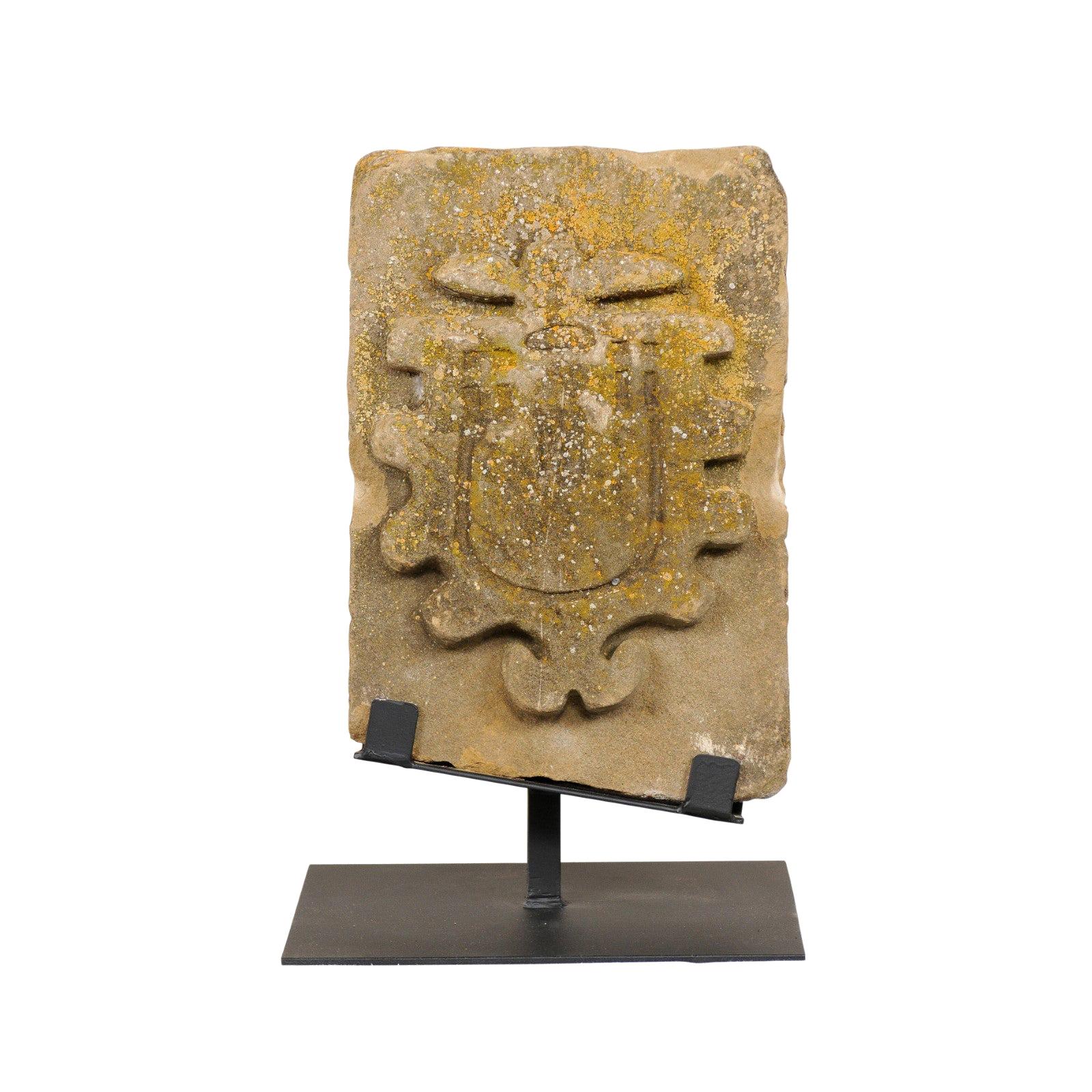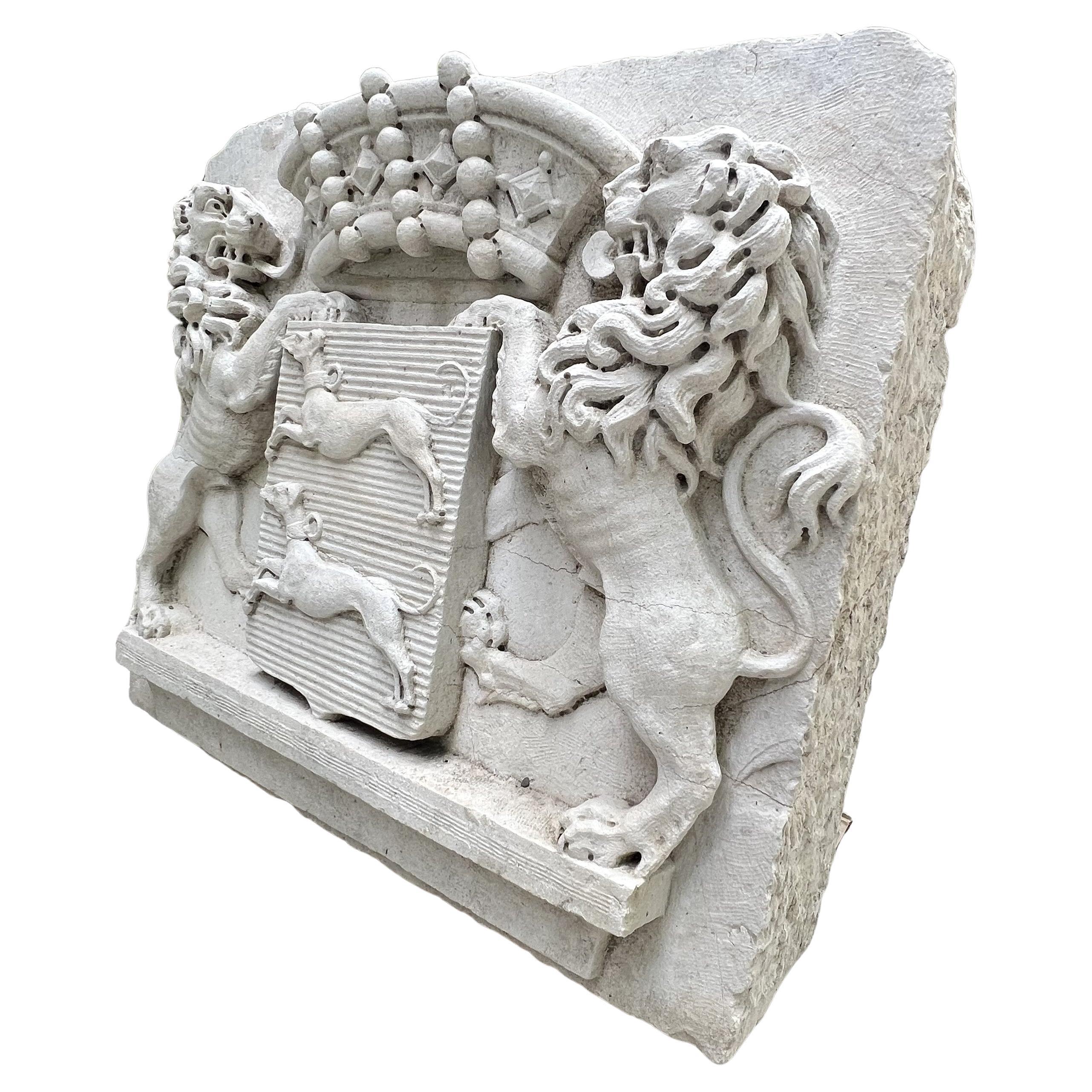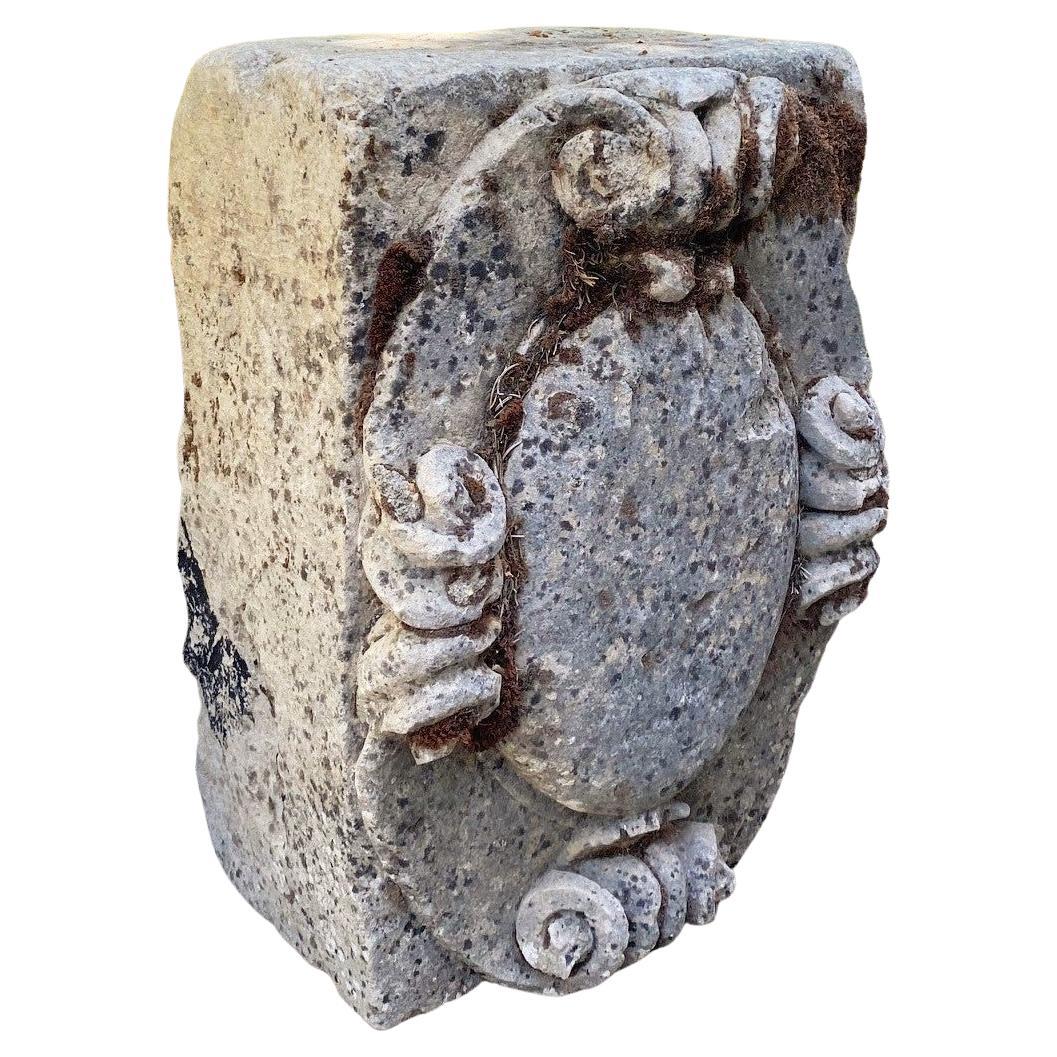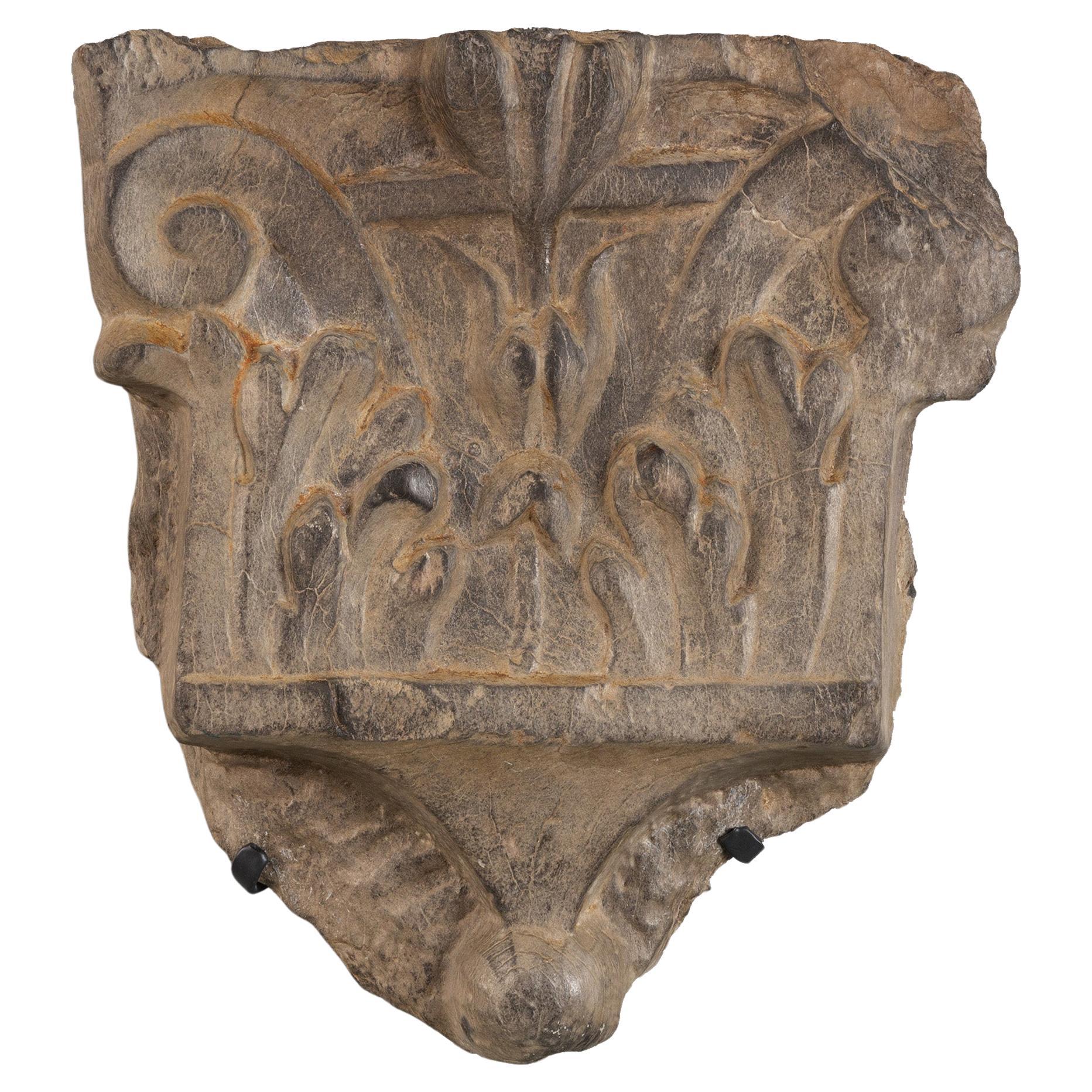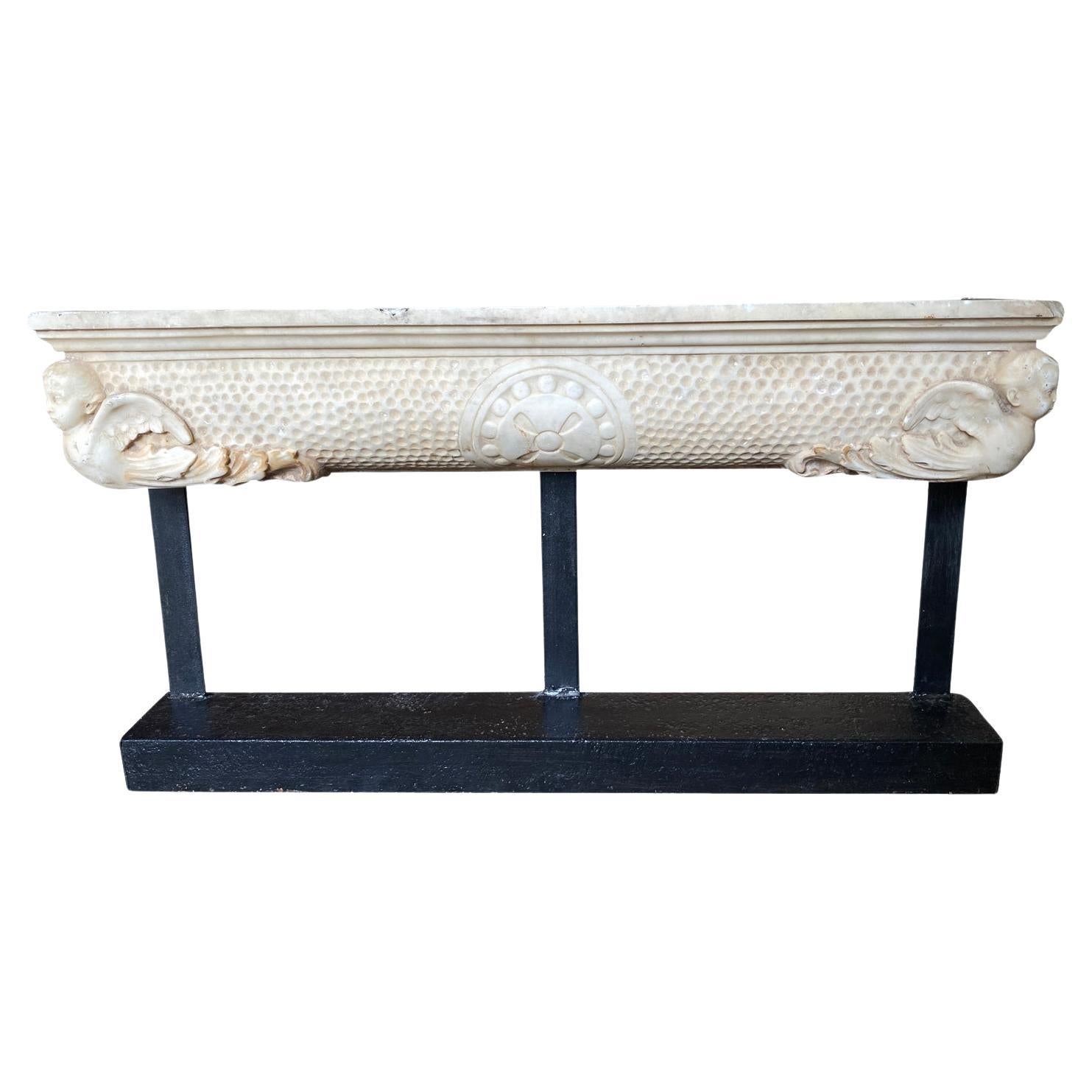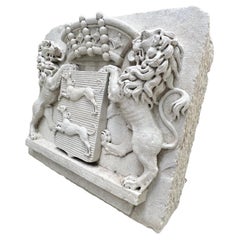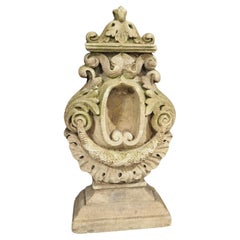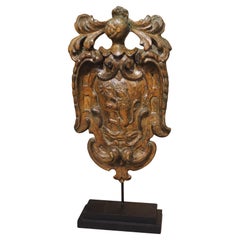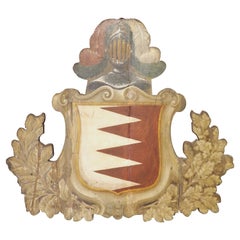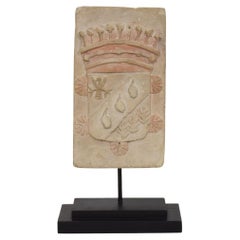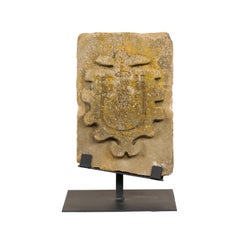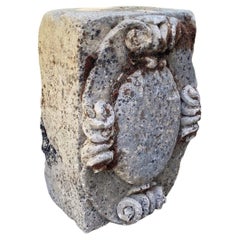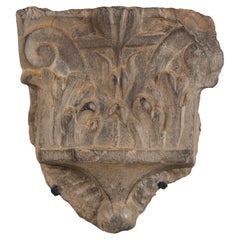Items Similar to Carved and Mounted Marble Stemma Cartouche from Tuscany, Italy, 16th Century
Want more images or videos?
Request additional images or videos from the seller
1 of 15
Carved and Mounted Marble Stemma Cartouche from Tuscany, Italy, 16th Century
$5,900
£4,509.36
€5,197.40
CA$8,449.93
A$9,260.87
CHF 4,836.20
MX$111,119.77
NOK 60,726.79
SEK 57,202.38
DKK 38,811.29
About the Item
The carvings of this marble stemma cartouche dates to the 1500’s. Hand-carved in Tuscany, Italy, the marble was mounted onto a geometrically shaped iron stand within the last century.
Stemmas can be traced back to ancient Rome when genealogical information was recorded on scrolls. In the Middle Ages, coat of arms began to replace stemmas as the preferred method for conveying familial lines. An oval escutcheon surrounded by scrolls is depicted on the 16-inch-tall marble. The shield has a sinister bend emblazoned with fluting. There are two floral rosette charges, one on each side of the bend. The left side of the marble has a large “Z” and a floral rosette amongst geometric carvings. Our Italian 16th century carved marble stemma cartouche can be displayed indoors or outside.
- Dimensions:Height: 21 in (53.34 cm)Width: 23.25 in (59.06 cm)Depth: 8.75 in (22.23 cm)
- Materials and Techniques:
- Place of Origin:
- Period:
- Date of Manufacture:1500s
- Condition:Additions or alterations made to the original: The iron stand was added by a previous owner. Wear consistent with age and use. Minor losses. Very good antique condition with fleabites and buildup to marble. The stand, which was added more recently, has minor rubs and oxidation to the iron. The marble has developed a weathered gray patina. Please see photos for details.
- Seller Location:Dallas, TX
- Reference Number:Seller: 1021-701stDibs: LU906325983412
About the Seller
5.0
Platinum Seller
Premium sellers with a 4.7+ rating and 24-hour response times
Established in 1983
1stDibs seller since 2011
863 sales on 1stDibs
Typical response time: 1 hour
- ShippingRetrieving quote...Shipping from: Dallas, TX
- Return Policy
Authenticity Guarantee
In the unlikely event there’s an issue with an item’s authenticity, contact us within 1 year for a full refund. DetailsMoney-Back Guarantee
If your item is not as described, is damaged in transit, or does not arrive, contact us within 7 days for a full refund. Details24-Hour Cancellation
You have a 24-hour grace period in which to reconsider your purchase, with no questions asked.Vetted Professional Sellers
Our world-class sellers must adhere to strict standards for service and quality, maintaining the integrity of our listings.Price-Match Guarantee
If you find that a seller listed the same item for a lower price elsewhere, we’ll match it.Trusted Global Delivery
Our best-in-class carrier network provides specialized shipping options worldwide, including custom delivery.More From This Seller
View AllA Heavy Carved Stone Armorial Relief from a Chateau in Nice, France, Circa 1700
Located in Dallas, TX
More information coming soon…
Dating to circa 1700, this heavy stone armorial has been hand-carved in relief. The 9 1/2 inch thick stone was found on a chateau in Nice, France. Th...
Category
Antique Early 18th Century French Animal Sculptures
Materials
Stone
Carved Stone Architectural Ornament, France Circa 1850
Located in Dallas, TX
Hand-carved in France, circa 1850, this unique limestone architectural is reminiscent of an antique reliquary. Its intricate design features a central niche flanked by volutes, above...
Category
Antique 1850s French Architectural Elements
Materials
Stone
17th Century Dutch Wooden Coat of Arms Cartouche on Stand
Located in Dallas, TX
Hand-carved in the 1600s, this wooden coat of arms cartouche depicts an ornate crest atop a shaped console with several charges. The cartouche is Dutch, considerably predating the fo...
Category
Antique 17th Century Dutch Mounted Objects
Materials
Wood, Paint
Large Painted Antique Tuscan Cartouche Panel, 18th Century
Located in Dallas, TX
This large cartouche panel was carved from wood and hand-painted with a central coat of arms in Italy during the 1700’s. Inspired by a 16th century Fr...
Category
Antique 18th Century Italian Baroque Architectural Elements
Materials
Wood
Rare 16th Century Architectural Stone Capital from France
Located in Dallas, TX
This rare fragment was salvaged from an entryway on a building in Fontvieille, near the city ancient Arles, France. There is a worn and carved center cartouche depicting a very small...
Category
Antique 16th Century French Gothic Architectural Elements
Materials
Stone
$3,900 Sale Price
32% Off
A 17th Century Mounted French Limestone Carving of a Winged Angel
Located in Dallas, TX
Originally part of a larger architectural from a French building in the 1600s, this hand-carved limestone fragment of a winged angel has been mounted more recently to a painted black...
Category
Antique 17th Century French Baroque Figurative Sculptures
Materials
Stone, Limestone, Metal
You May Also Like
18th Century French Carved Stone Coat of Arms
Located in Buisson, FR
Very beautiful hand carved limestone coat of arms. Great weathered patina and traces of old color.
France, circa 1750. Weathered.
Measurement here below is inclusive the wooden base....
Category
Antique 18th Century French Baroque Architectural Elements
Materials
Stone
An Antique Architectural Carved Stone Fragment From Aragon Spain On Custom Stand
Located in Atlanta, GA
An 18th to 19th century carved stone architectural fragment from Aragon, Spain. This antique architectural fragment from Aragon has been hand-carved of stone, featuring a raised shield-shaped design with curvy outline about it's perimeter, and is nicely presented upon on a custom black iron base. The stone has a fabulous patina with weathering, and some areas of wear and slight losses, showing it's rich history and prior use. This 18th to 19th century Spanish carved stone fragment...
Category
Antique 18th Century Spanish Mounted Objects
Materials
Stone
18th Century Hand Carved Stone Coat of Arm Wall Mount Art Overdoor Crest Antique
Located in West Hollywood, CA
18th Century Hand Carved Stone Coat of Arm Wall Mount Art Overdoor Crest Antique . Rare 18th century Blason Armorial Armoirie Coat of Arms with finely hand carved scrolls around an oval medallion. Great to wall mount this historic sculpture...
Category
Antique 18th Century French Architectural Elements
Materials
Stone, Limestone
16th Century Ligurian Stone Half-Capital
Located in London, GB
A rare 16th Century Italian stone Corinthian half-capital, carved in Ligurian slate, mounted on a simple wrought iron bracket for wall hanging.
Category
Antique 16th Century Italian Renaissance Wall-mounted Sculptures
Materials
Slate, Iron
Italian 16th Century Marble Fragment
Located in Round Top, TX
A very stunning 16th century Marble Fragment from the Veneto region of Italy. Beautifully carved with angels or putti and now mounted on its iron...
Category
Antique 16th Century Italian Architectural Elements
Materials
Marble
Antique English Carved Stone Armorial Plaque on Stand
Located in Wormelow, Herefordshire
This antique English carved stone armorial plaque is from Athelhampton House, one of England’s finest Tudor manors located in the Dorchester countrysid...
Category
Antique 19th Century English Tudor Mounted Objects
Materials
Limestone, Stone
